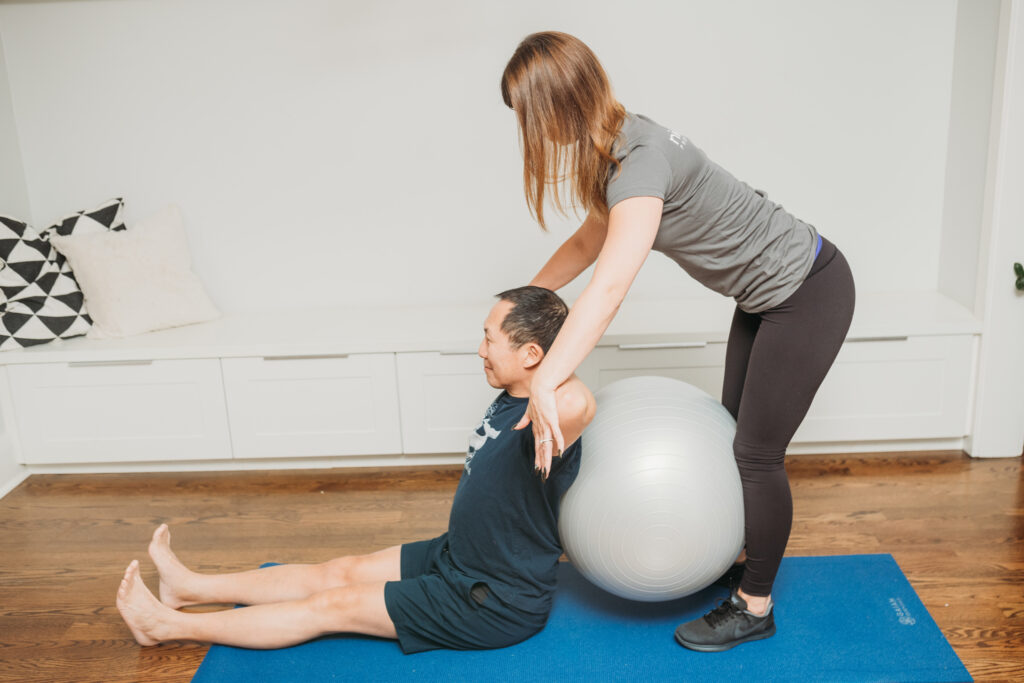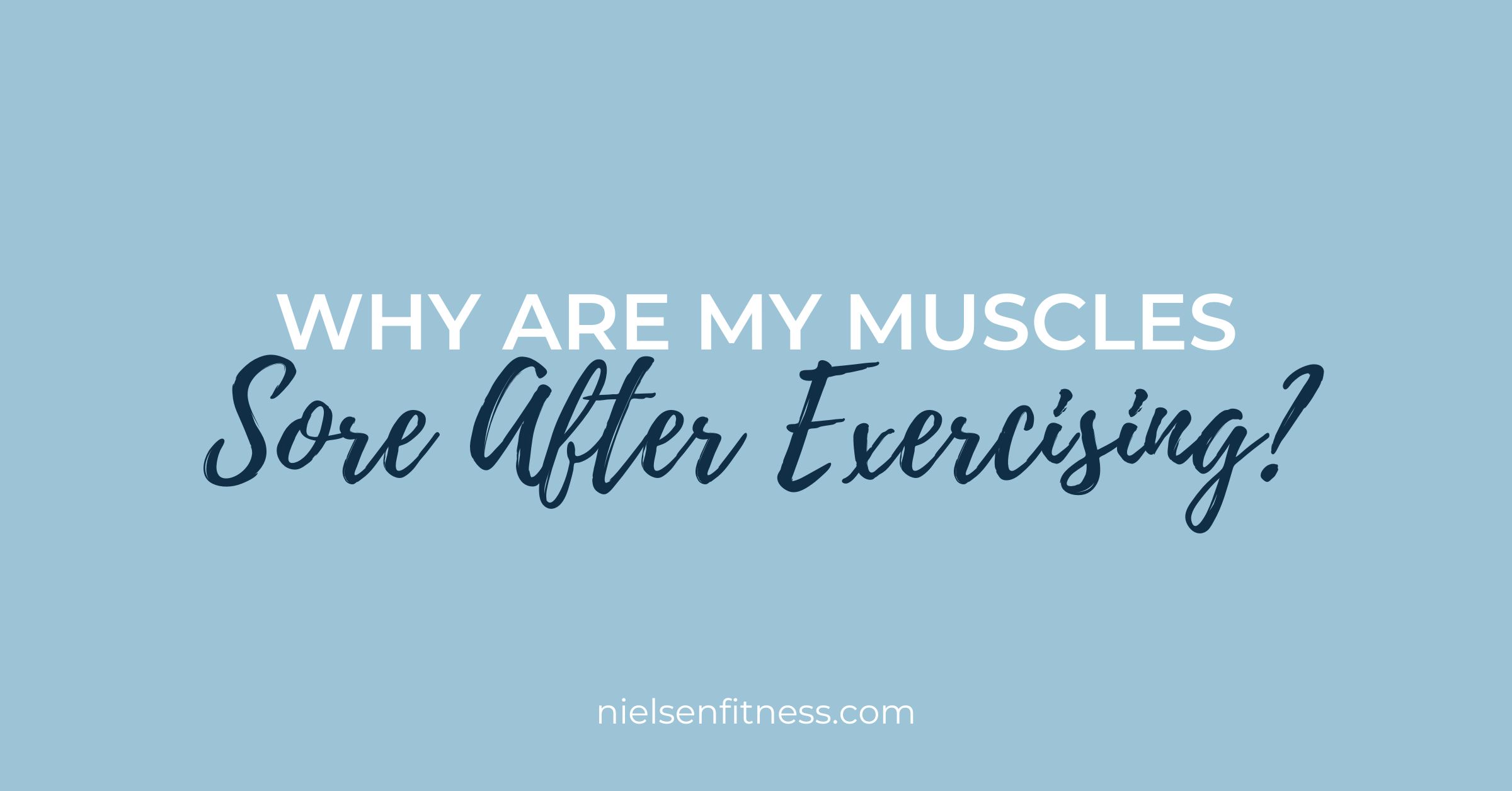July 16th, 2021
Why Are My Muscles Sore After Exercising?
‘No Pain, No Gain’ used to be a pretty common phrase. Truth, or a rhyme with no reason? This phrase could be responsible for the culture of pain pushers. Thankfully, this theory isn’t considered ‘normal’ anymore, but we can feel some form of pain, even after a well-planned workout. Let’s talk about pain and what we can do about it.
DELAYED ONSET MUSCLE SORENESS
Muscles can become sore after trying a new exercise, starting a new program, or increasing the intensity of an exercise. You won’t often feel the soreness for a day or two. We refer to this pain as DOMS, Delayed Onset Muscle Soreness.
DOMS is a term used to describe the soreness your muscles, joints, tendons and overall body feels after you workout. Not every workout will result in soreness. The severity of muscle soreness depends on the individual and the exercise. Some people never feel sore, while others always experience it.
Being sore is not always proof that you’ve had an effective workout. You may feel uncomfortable when starting a new program, but after a couple of weeks, the pain subsides and yet, you still see results.
You’ve probably been a victim to Delayed Onset Muscle Soreness (DOMS) even if you haven’t enrolled in an exercise program or lifted weights before. Take the beginning of the gardening season, for example: The first day gardening has left you feeling sore a few days later. But as the summer wears on and gardening continues, you feel better and stronger. What once slowed you down for a few days seems like a walk in the park. The soreness you felt in the spring seems like a distant memory.
DOMS doesn’t discriminate. Whether you are returning from a health-hiatus or a pro-athlete, you can get soreness from exercise. Increased intensity during workouts and new training techniques can cause some pain. This delay in muscle soreness occurs when a muscle hasn’t been used for a while, or you are trying to strengthen it.
Delayed muscle soreness is a regular occurrence for many exercise programs and other forms of activity you may take up to stay fit. What exactly is DOMS? Why do we feel it a day or two later?
Experiencing DOMS?
When using a muscle in an alternative way, or increasing the intensity of a workout, researchers believe micro-tearing occurs in the muscle fibres. This tearing causes inflammation. While your body is working to repair the micro-tears, the nerves are stimulated, which causes you to feel the pain. As the swelling subsides, so does the pain. DOMS starts and ends with the inflammation in your muscles anywhere from a 24–72-hour period.
If you are feeling extreme pain or sharp pain, you may not be experiencing DOMS. This could be an injury from an overworked muscle or using poor form. Seek medical attention if the pain isn’t going away.
Engaging in a new exercise program can cause some discomfort for the first couple of weeks. Your personal trainer at Nielsen Fitness will create a program which reflects your current fitness level. We’ll develop your position, stamina and strength while closely flying under the radar of feeling sore. Individual attention when using a personal trainer results in a great balance between workout/workload and recovery.

Preventative Steps
Although avoiding DOMS all together can be difficult when trying a new exercise program, or increasing the intensity of your workouts, you can help lessen the severity by following these steps.
1. STAY HYDRATED
Drink enough water before/during and after your exercise regime to keep your muscles and organs functioning properly. Dehydration can cause muscle pain and cramps, so while your heart is pumping during a workout, make sure your body is hydrated. Your muscles can get the blood and oxygen supply they need to help with recovery.
You could be tempted to have a smoothie or some other nutritious beverage after a workout, but your body needs water first. Water is the lifeline to recovering muscles, so providing your body with hydration will help the process.
2. Progress Your Workouts Slowly
Remember the race between the turtle and the hare? The turtle has the more positive outcome. Staying at a healthy, gradual pace is rewarding. The consequence of doing too much too soon can put you in too much discouraging pain, or worse, injury.
When starting something new or increasing the intensity of a workout, it’s important to remember to take it slow. You don’t have to suffer from DOMS to know you’ve done a good workout. Building and strengthening muscle takes time. But if you dive in headfirst and go into the fast lane with a blindfold on, you’re going to get sore, or potentially permanently injured.
3. Give yourself enough time to warm-up
Get your muscles ready. Actively moving your joints and muscles through dynamic stretches will help get your body ready to workout. A thorough warm-up followed by a workout your body will easily adapt to is important. Actively move your entire body for 5-10 minutes before jumping into your workout.
Don’t ditch the warm up after you’ve established some success. The warmup is important whether you are just starting out or a professional. As you increase the intensity of your workouts, your body will thank you for the warmups. Neglecting to properly warm up can make more than just your muscles sore, it can also hurt your joints.
4. FINISH WITH LOW INTENSITY
Just as you move from warming up to higher intensity, you will benefit by progressively cooling down. A well-rounded workout encourages an ease-in, ease-out approach. You should never finish a workout at a sudden stop. Lower-intensity exercises, along with mobility and flexibility movements is the key.
5. MORE IS NOT BETTER
We have a lot of motivation when we begin a new program, excited to see positive changes in our body. A fitness program should help you achieve results safely.
Aggressive exercise plans with a ‘no pain no gain,’ strategy can lead to severe DOMS, so make sure you enrol in a program which builds a healthy routine. You should never work out to a point where you are wincing in pain or unable to move. Do you want to talk to us about your fitness needs? Apply to work with us here, and if you qualify your first workout will be free.
Updated on November 2


